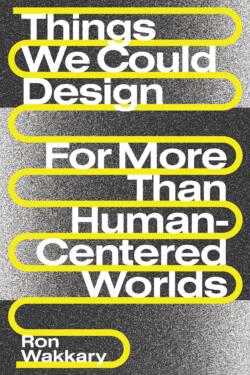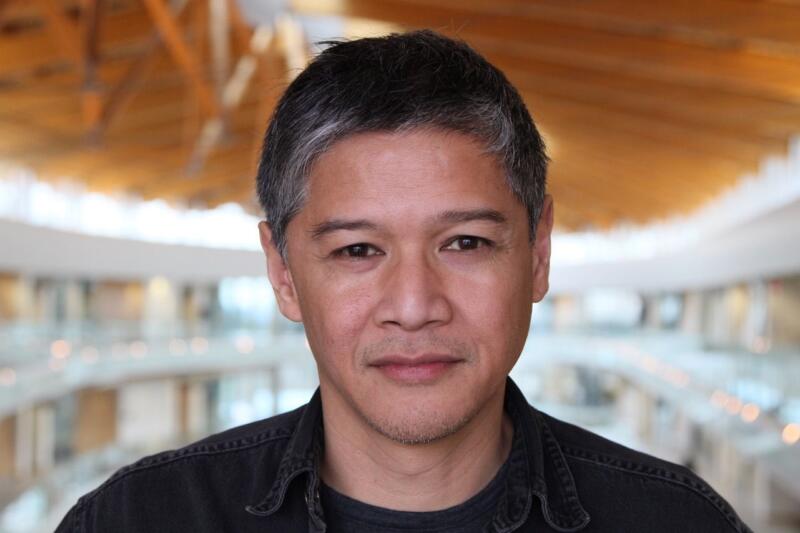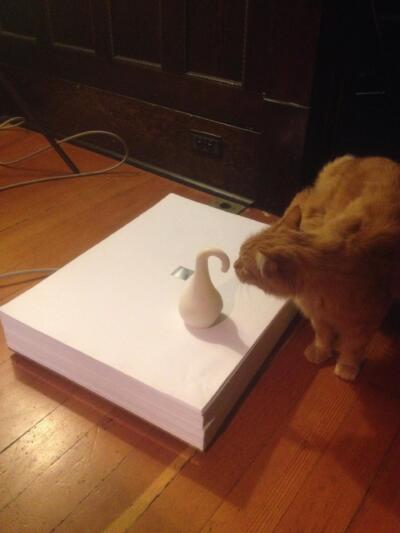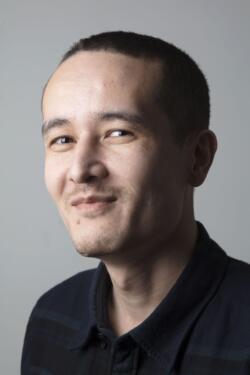1333 Deep, beautiful, and a little quirky
Things We Could Design: For More Than Human-Centered Worlds
by Ron Wakkary
Toronto: Penguin Random House Canada (The MIT Press), 2021
$47.00 / 9780262542999
Reviewed by Thomas Girard
*
 Ron Wakkary’s Things We Could Design: For More Than Human-Centered Worlds is a delightful book that brings us into an important conversation taking place in Vancouver, Canada, and beyond. Although one might call this a conversation about design, and yes, interactive design, it’s really something else entirely. And it’s something you all need to know about.
Ron Wakkary’s Things We Could Design: For More Than Human-Centered Worlds is a delightful book that brings us into an important conversation taking place in Vancouver, Canada, and beyond. Although one might call this a conversation about design, and yes, interactive design, it’s really something else entirely. And it’s something you all need to know about.
To begin, you might learn that Vancouver is divided into streams of thought in the interactive world, and one of those more academic streams is at Simon Fraser University’s School of Interactive Arts and Technology. Through long lists of citations, tenured professors, PhD candidates, suburban campuses, and funded research labs we begin to discover that there’s a whole world of knowledge here. If we were to call this design, we might know that design as a dinner table conversation perhaps ordinarily manifests thought bubbles of a perfectly ergonomic chair or a dating app that actually works.
But what goes on behind this? Ron Wakkary brings us into those conversations ranging from design and the Anthropocene to design for non-human animals. He brings an almost imperceptible hum to the machinery that affords a lucky few of us a way of life. His journey becomes our and your journey, and quite quickly you start to ask, “Did I get this?” and “Wait! what?” before flipping to the next chapter in eager anticipation. Like me, you might find Things We Could Design sitting by your bedside table, with rereads being equally fruitful.


In reference to the specifics of design terminology, in what we might call Ron’s world, the interactive speaks to all of us especially in the way we use things, the way we like things, the reasons we use things, and the possibilities we create by using things. Where names like Moggridge and Norman end, Wakkary begins. Wakkary creates opportunities and solves problems about the interactive in Things We Could Design mainly by supporting a traditionally practice-based field that prides itself in contributing practical design knowledge to any layperson. But it could be argued that his particular angle is on the theoretical ramp or approach. And this is still quite new: the idea that, through theory, design can make progress and start to co-create and be generative in ways that incorporate ideas from other somewhat tangential fields. One actual gap that’s addressed here, if we wanted to venture a bit, is that perhaps design can be entirely in our heads, and still make headway. Climate, political views, space travel, and autonomous cars are very much design things, both in practice and in theory, and Wakkary reveals this by being boldly implicit and delicate.

If you’re interested in the contemporary everyday silos of design, you might populate your palette with words like user experience, graphic design, colours, fonts, etc., especially when making reference to the interactive. Things We Could Design is a bit more than that. But what it helps us understand is important: that we can all participate in bigger ideas and conversations of design and that we can all, in a way, be its practitioners. A lifetime of studies in the area might help, and sometimes we think we can’t compete with those holding appropriate degree qualifications, but you’ll soon understand that a degree frame of mind limits you at the same time, because you no longer have access to “fresh eyes,” the seeing of a thing for the first time, the point of view that researchers in the area so desperately seek out and create room and empathy for.
Ron Wakkary’s book represents the nodes of a worldview expressed at Simon Fraser University’s School of Interactive Arts and Technology. On the one hand it might seem heavy, but more importantly it provides access to a wealth and breadth of knowledge that the academy supports. Things We Could Design is deep, beautiful, and a little quirky. For the layperson wanting entry into another world, where thought and imagination in all of its modalities are king, this book is for you. You’ll find it at the same time as precious as it is contextual, representing a piece of our time that is very much needed and too seldom released for the masses.
I would include it on the very top of my short stack of relevant books and I think you should too, if only to say, “I know that one. And I liked it.”
*

Thomas Girard (born 1980) has a B. Des (Communication Design) from Emily Carr University of Art + Design (2005). He is a student in the Graduate Liberal Studies Program at SFU. He has received several Emerging Scholar awards, first at the Design Principles and Practices conference in Barcelona at the prestigious ELISAVA. At Emily Carr University of Art + Design he received his second Emerging Scholar award. Other awards include RBC Emerging Scholar, Royal Bank of Canada Foundation. He has also been accepted to attend the University of Oxford in lectures equivalent to graduate coursework. For 2021, he has been awarded an Emerging Scholar award from the New Directions in the Humanities conference in Madrid, Spain. Editor’s note: Thomas Girard has also contributed two essays to The Ormsby Review, Unique ways of prototyping (August 23, 2020), and Advanced Typography Workshops in Quarantine (January 24, 2021).
*
The Ormsby Review. More Books. More Reviews. More Often.
Publisher and Editor: Richard Mackie
The Ormsby Review is a journal service for in-depth coverage of BC books and authors in all fields and genres. The Advisory Board consists of Jean Barman, Wade Davis, Robin Fisher, Cole Harris, Hugh Johnston, Kathy Mezei, Patricia Roy, Maria Tippett, and Graeme Wynn. Scholarly Patron: SFU Graduate Liberal Studies. Honorary Patron: Yosef Wosk. Provincial Government Patron since September 2018: Creative BC
“Only connect.” – E.M. Forster
6 comments on “1333 Deep, beautiful, and a little quirky”